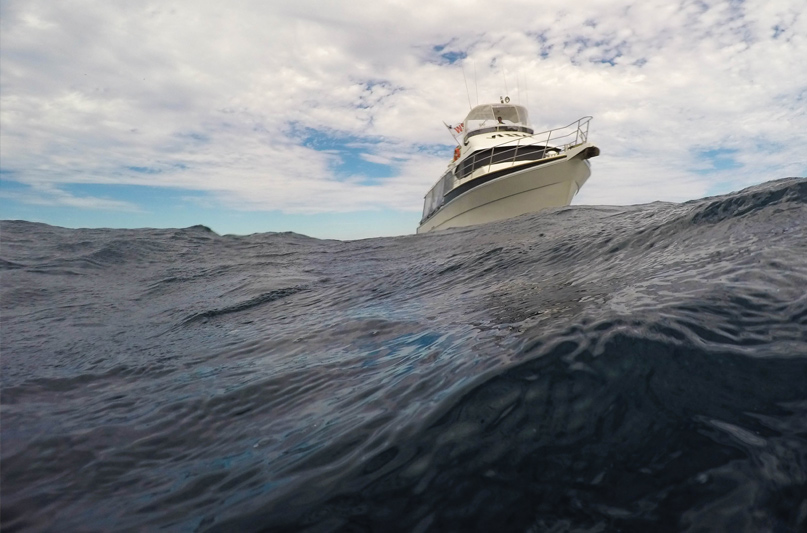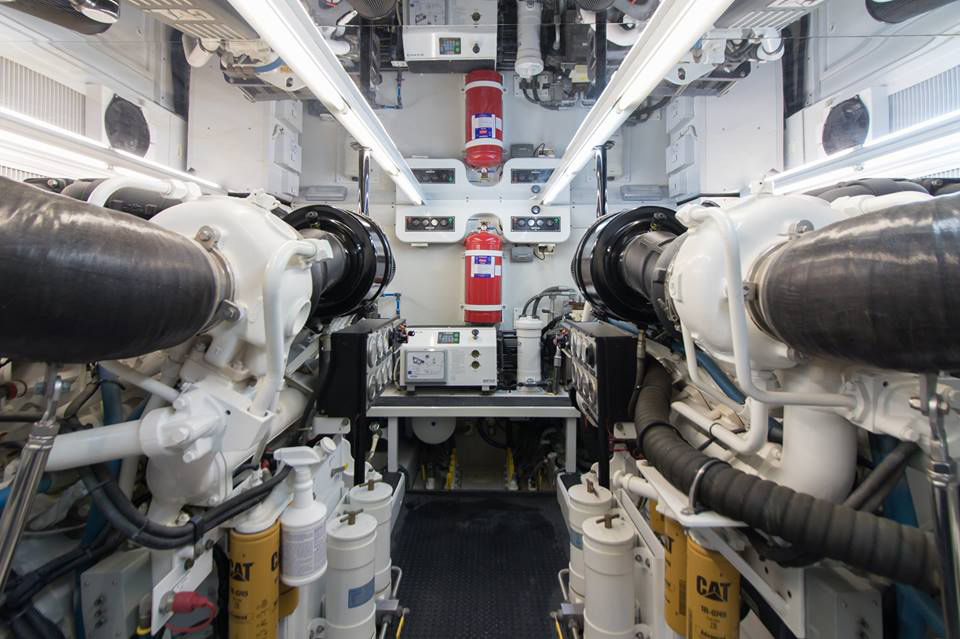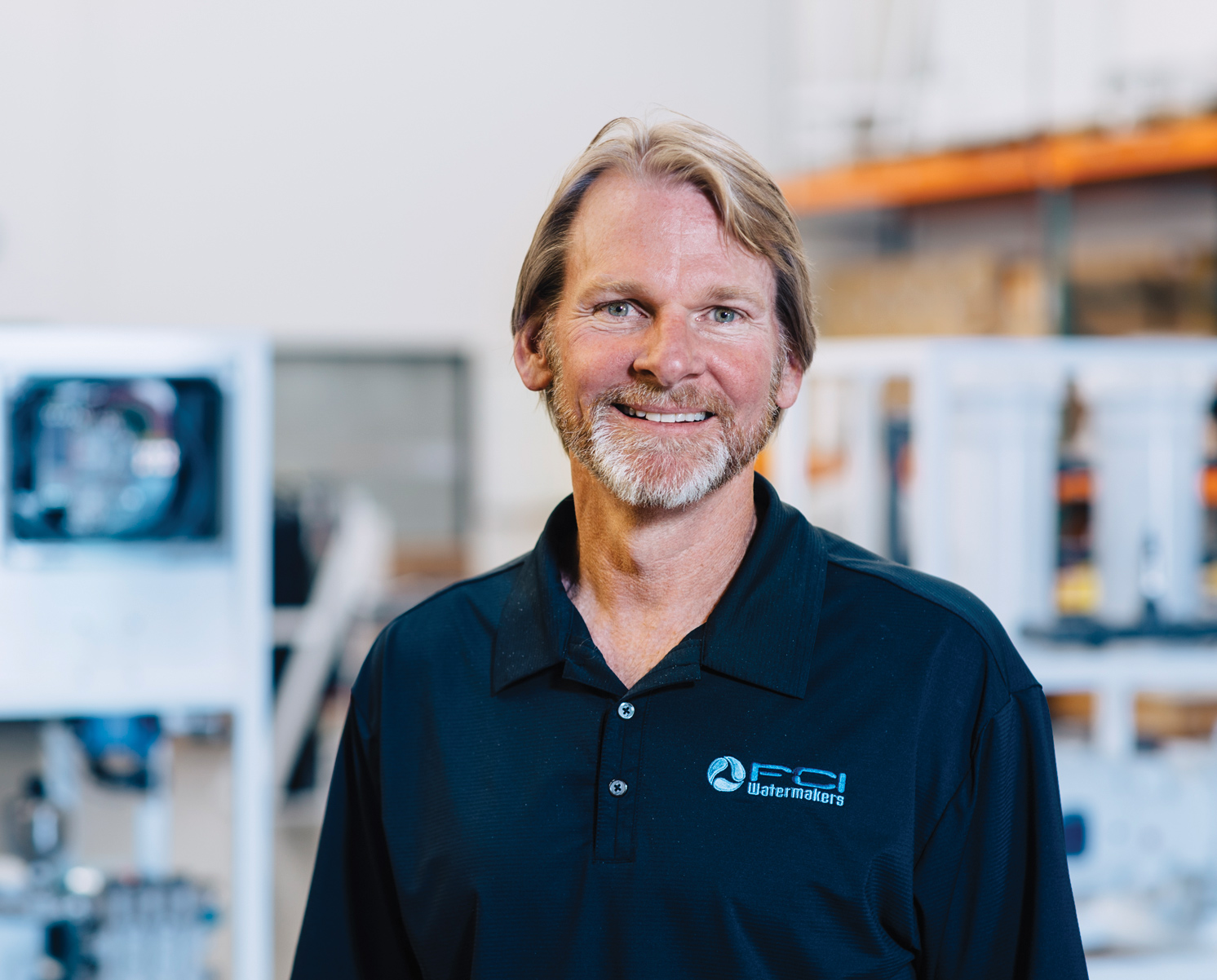
“Pure water is the world’s first and foremost medicine.”
– [Alleged] Slovakian Proverb
In many ways, the ability to make fresh drinking water while underway represents freedom. For what are we forced to seek the unpleasantries of land for, anyway? Often we go to shore simply to top off the water tanks. Throw in the factor that many of the world’s greatest cruising grounds are in remote corners of the world not renown for excellent water treatment facilities, and the case for a watermaker strengthens.
The watermakers of today are benefitting greatly from technological advances. Nano-materials are improving by leaps and bounds yearly, and this directly translates to superior filtration membranes, vital to the reverse osmosis used in watermaker units aboard. Power consumption, size, and programmable settings are all evolving, transforming watermakers into increasingly efficient, compact, and automated systems. Even units on the smaller side of the scale produce hundreds of gallons of drinkable freshwater a day from common seawater. Show this ability to a salty whaler from Herman Melville’s day, and surely talk of miracles would result.
Thanks to their popularity and improvements, watermakers are also increasingly standard. Once considered a luxury (they are not cheap, by any measure), watermakers are now options among most mid- to large-sized yacht builders.
How exactly do these systems work? Is the price coming down anytime soon? To sate our curiosity, we reached out to Scott McGuire, founder and president of Filtration Concepts Inc. (FCI) Watermakers. Considered a leader in on-board watermaking solutions, Southern California-founded and now Utah-headquartered FCI has been leading the charge in the industry since the company’s founding in 1992.
NWY: What is the science behind watermakers?
We use reverse osmosis as our main method of purifying seawater. Reverse osmosis in this case simply involves passing seawater (solvent) through a membrane that the solutes (sea salt) cannot pass through. Reverse osmosis is commonly used on land as well to purify water for the public.
NWY: What’s the basics of how watermakers work?
Seawater is pumped through prefiltration to remove particulates. This step essentially prepares the seawater for the reverse osmosis, for we don’t want to compromise the membrane with free-floating particulates (sediment, plankton, etc.) that’s found in raw seawater.
The filtered seawater is then pumped through a semi-permeable membrane at high pressure to extract the fresh water from the seawater. This is the reverse osmosis referred to earlier. The product water that successfully passes through the membrane is then routed to a salinity probe, which confirms the quality of the water produced. If the product water is acceptable, this purified water is transported to a fresh water holding tank. Unacceptable water that does not pass the salinity test is discarded and diverted with the brine discharge.
NWY: Besides the watermaking unit itself, what else is required aboard? (piping, power, replaceable membranes, etc.?)
For a yachting application, the installation would require an inlet thru-hull, discharge thru-hull, connection to the freshwater tank, electrical connection to the breaker panel, and a line from the boat’s freshwater pump to the watermaker for the automatic fresh water flush. It’s probably best to view the watermaker as less of a unit and more of an integrated system aboard.
With FCI’s inclusive pricing on our watermaking systems, you don’t need to buy add-ons, accessories, or upgrades to achieve desired performance. What’s more, FCI systems come fully calibrated versus some brands that require additional accessories or calibration solutions to complete the set up.
NWY: What kind of maintenance or best practices do watermakers require?
Watermakers have come a long way because of our automatic freshwater flush. This is done after every use, automatically. Because of this, the maintenance has been reduced to changing the oil every 500 hours and changing the prefilter as needed. Before this, freshwater flushes were manual and more susceptible to human error, leading to premature failures.
If you’re planning some long-haul cruising, important spare parts to carry on board include prefilters, high-pressure pump oil, GAC filters, high and low-pressure pump seals, and high-pressure pump valves. It is recommended to replace seals after every 1,000 hours of use and valves after every 1,500 hours of use.
NWY: How much water can these units make? What’s the scale that we’re talking here?
FCI manufactures RO (reverse osmosis) plants capable of making 200 gpd (gallons per day) to 256,000 gpd. Of course, that upper limit is for land-based watermakers. Our marine group of watermakers ranges up to our Atlas+ model that can deliver 3,600 gpd for both recreational and commercial vessels. We also make custom watermakers as needed, so the sky really is the limit in terms of what we can do aboard.
NWY: What are some big differences between modern watermakers and ones from five or even ten years ago?
Our components have evolved significantly to accommodate the marine environment and provide longer life. The biggest difference in functionality is our control systems. We offer fully automated systems that operate with the touch of a button. No more having to go to the watermaker and manually adjusting pressures.
We [FCI] are the only watermaker manufacturer to offer controls that are Bridge Classified for marine use with Type Approval Certifications from: ABS, GL, Lloyd’s Register EMEA, Det Norske Veritas, and Russian Maritime Register of Shipping.
NWY: For what kind of boat would you recommend a watermaker unit for?
Any boat that has a genset or invertor and has to come to port to fill up can use a watermaker.
NWY: Are watermakers becoming more standard on mid- to large-size yachts?
Due to the often considerable fresh water demands, they are now part of the conversation when building or buying any yacht. Beyond mere drinking and bathing, there’s often a need to fill hot tubs and pools and use it for boat systems and routine deck washing. We recommend our Neptune series, which makes from 1,275 to 9,500 gallons of pure, fresh water every day—enough for the most sizable vessel.
NWY: Is there a one-size-fits-all approach to watermakers, or is there the right watermaker for every boat?
The watermaker should be sized to the vessel. Take into consideration the tank size, run time, and passenger water usage to determine the right size. These variables are key to picking the right watermaker for your situation. Our online sizing guide will assist with this, check it out at fciwatermakers.com.
NWY: What does the installation process look like? Probably not a lot of do-it-yourselfers?
Installation is straightforward with the right documentation. We provide complete exploded views, diagrams, parts lists, and very thorough manuals that anyone can follow. We also offer these materials digitally. Additionally, we have a large dealer network in 60 countries across six continents available to assist as needed.
NWY: In your opinion, what are some of the best reasons to get a watermaker?
Independence. You generally have to come to port for three reasons: fuel, food, or water. Eliminating the water is just one less reason to have to come in.
Also, peace of mind. Some ports in more rugged locations have very questionable water. Making your own water eliminates that risk completely, making for a safe drinking experience no matter where you are.
NWY: What are the most troublesome components of a typical watermaker to keep your eyes on?
We have evolved our systems to the point that there is not a single something I would point to as a trouble area. Keep up with the minimal servicing and you should expect years of watermaking out of your setup.
NWY: Watermakers are not exactly cheap. Do you see the cost going down as the technology becomes more ubiquitous in the boating sphere?
Although I don’t see watermaker prices going down, I do see the potential for the cost per gallon dropping due to improvements in the membrane technology.
As membranes get better and better, the frequency of servicing or replacing them decreases. A fix to a watermaker’s membrane can be costly, so reducing the vulnerability of it is definitely a plus for the user.

